Shadows in literature, folklore, and Jungian psychology tend to get a bad rap.
The dark side. The unseen. The symbolic representation of repressed behavior or things we wish to keep hidden. Uncertainty. Fear. Unknown. Mystery. The place where things lurk.
But to the artist, the shadow is a place where colors and tonal ranges shift. Magic exists in the transitional space where light falls off an object. Shadows have many personalities, soft, hard, intense, nuanced. There are shadows cast (by a thing) and core shadows (the dark side on a thing), highlights, and perhaps my favorite: light reflected back into the depth of a shadow.
A shadow’s edge is alive. A thing which can be thick or thin depending on the distance from and exact conditions of its light source.
And then there’s a photographer’s favorite shadow — that of our planet. Golden hour. I’ll never forget the first time I flew into sunset on a trans-Atlantic flight. From above the earth I could see it — feel it — how sunrise and sunset are the literal edges of our own planetary shadow, alive and resplendent with the colorful celebration of our rotation into day or night.
In 2011, there were circles in which I was known as The Shadow Master.
Admittedly they were small circles, made up of fellow artsy humans scattered across the globe. We were all making connections and finding beauty in our everyday lives within a new virtual community called instagram. You may have heard of it?
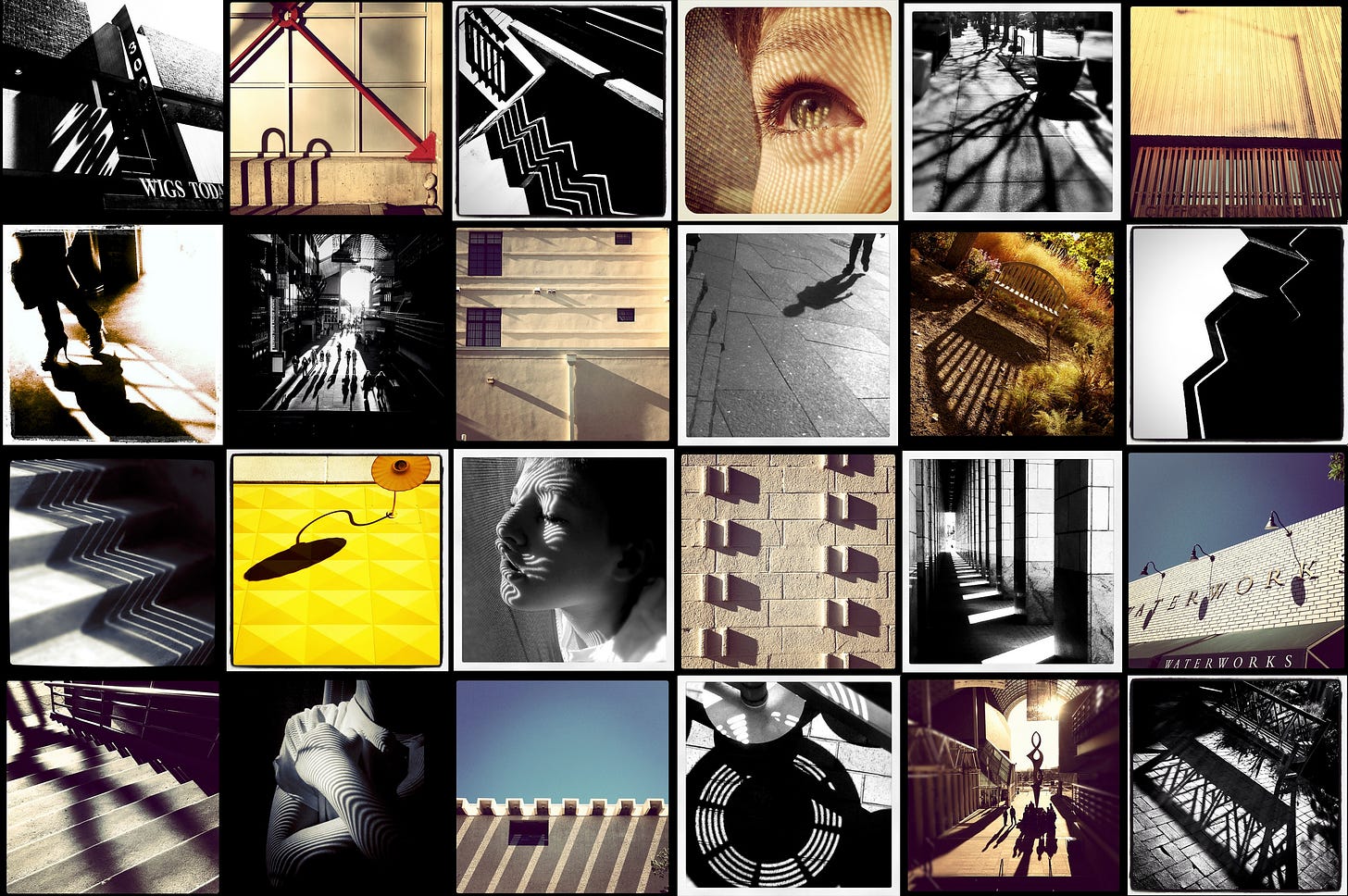
The only device I had that would connect to IG was an iPod Touch. It captured photos in vector (lines), not pixel (dots, how your phone captures now) graphics, which meant the image quality was basically garbage. But garbage-tech ironically pushed me to create more clean, idea-driven images that could transcend lack of quality and detail with strength of composition.
I actively sought intentional frames, areas of light and shadow, compositions of solids and voids.
With better tech (my first iPhone was the 4) came technically better photos.
But I’ll always be grateful for what I learned conducting lower quality creative experiments. Creating through low-tech pushed me to see intentionally in a way I might not otherwise have discovered.
sunrise and sunset the literal edges of our own planetary shadow, alive and resplendent with the colorful celebration of our rotation into day or night
Noticing patterns in shadows, big or small, organic or linear, can be another way to isolate a subject, explore rules of composition, slow-look, and find layers of visual interest that surround us every day.
Want to play? Here come some ideas in the form of a prompt…
Good Foot Prompt: Shadows
on a bright sunny day, look for shadows cast by railings, textured urban meshes, benches, trees, people, tiny flowers or big leafy patterns
notice the rhythm of dark and light in these patterns — how it shifts with the angle of the sun over time, especially in the context of its surroundings
notice how color changes from bright sun to overcast (yes there are still shadows on cloudy days) on urban and organic surfaces — unless you make art for a living, I can almost promise the change in color is more dramatic than you’ve ever noticed — shadows contain a whole lot of color once your eyes adjust
if you want to create shadow photos, limit the area you select to frame and make the shadow pattern the main subject of your composition:
remove distractions by getting closer to the area you want to capture
play with the angle at which you frame your shadows — perfectly aligned or diagonally in the composition create dramatically different effects
find something (a person, a bug, an urban element, etc.) to interrupt the shadow and see how that adds dramatic tension to the final photo
put someone directly into a shadow and watch it play on their face or form
shadows will be longer at the edges of the day so be sure to play in early morning or late afternoon
a little editing can make these photos really sing: increase contrast to your liking, ideally achieving a tonal range from rich blacks to bright whites, although this changes with mood and atmosphere you seek to communicate (you can also play with highlights and blacks to increase or decrease the effects)
converting images to black & white can farther enhance a strong shadow-play photo, making the image all about dark and light/solid and void
visit older Good Footprint prompts to brush up on tips for strong COMPOSITION or to create a COLLECTION of images to document shadows over time
insider tip: this autumn, watch for animal circus shadows when the sun is low (early morning is best, and oak leaves are my personal favorite) — you’ll never see these shadows the same!
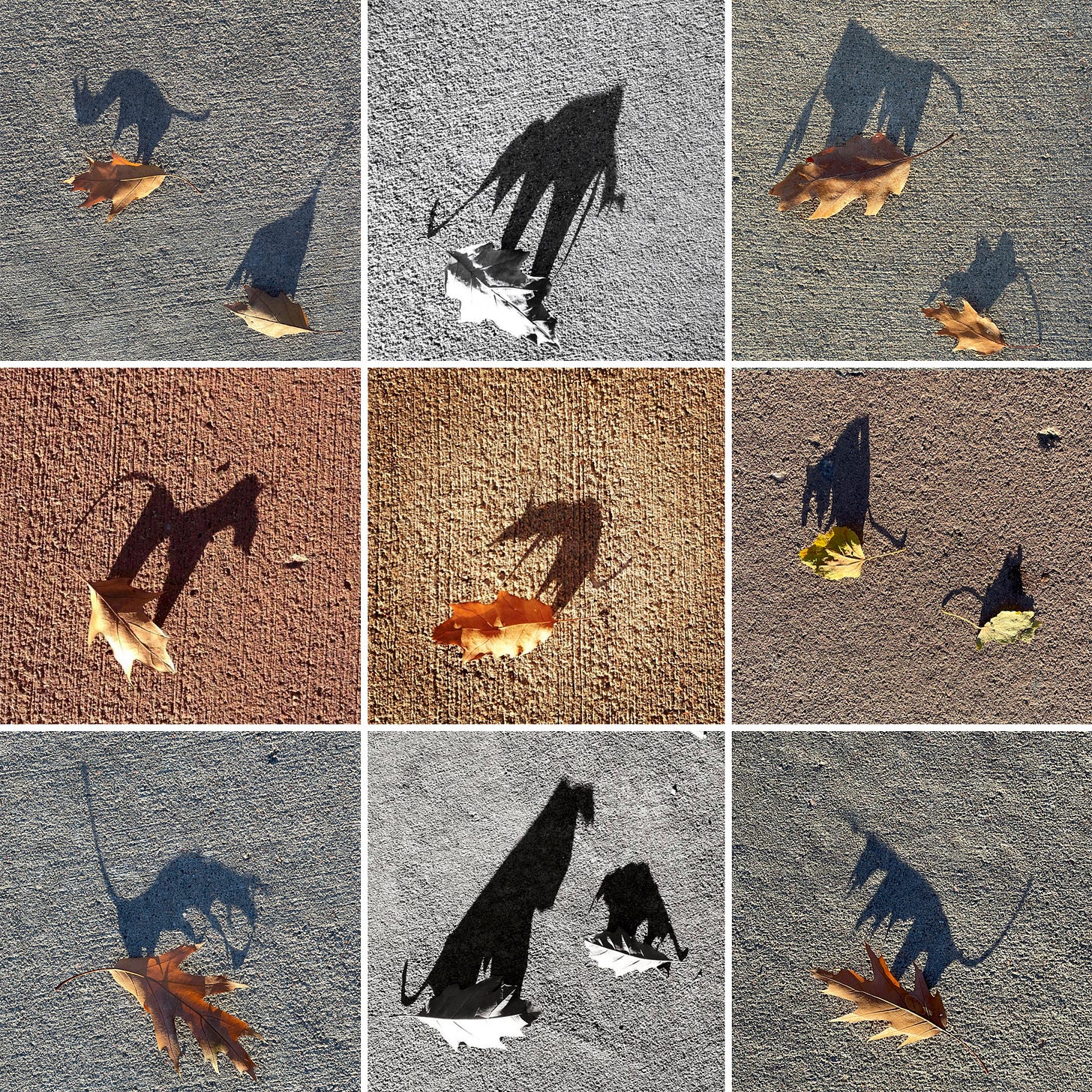
I’ll open up a chat later today in case you’d like to share fun shadow photos you discover — I love having you here and I’d love to see what you create.




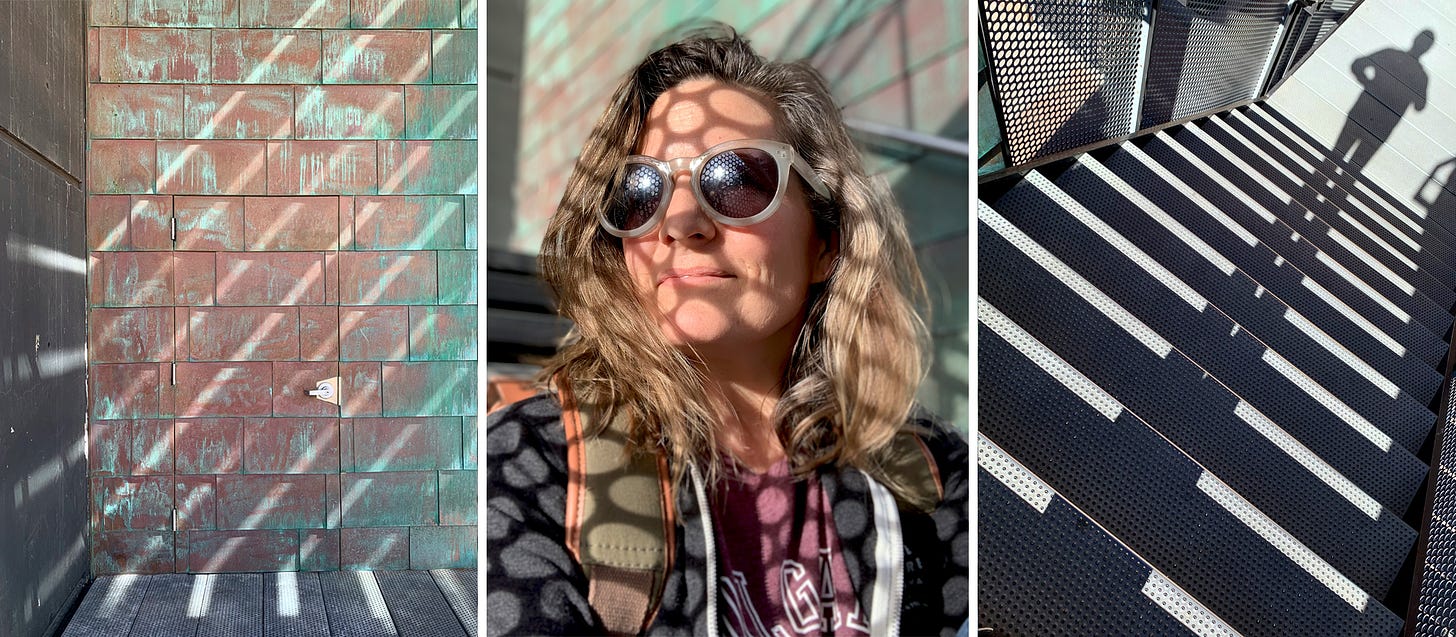
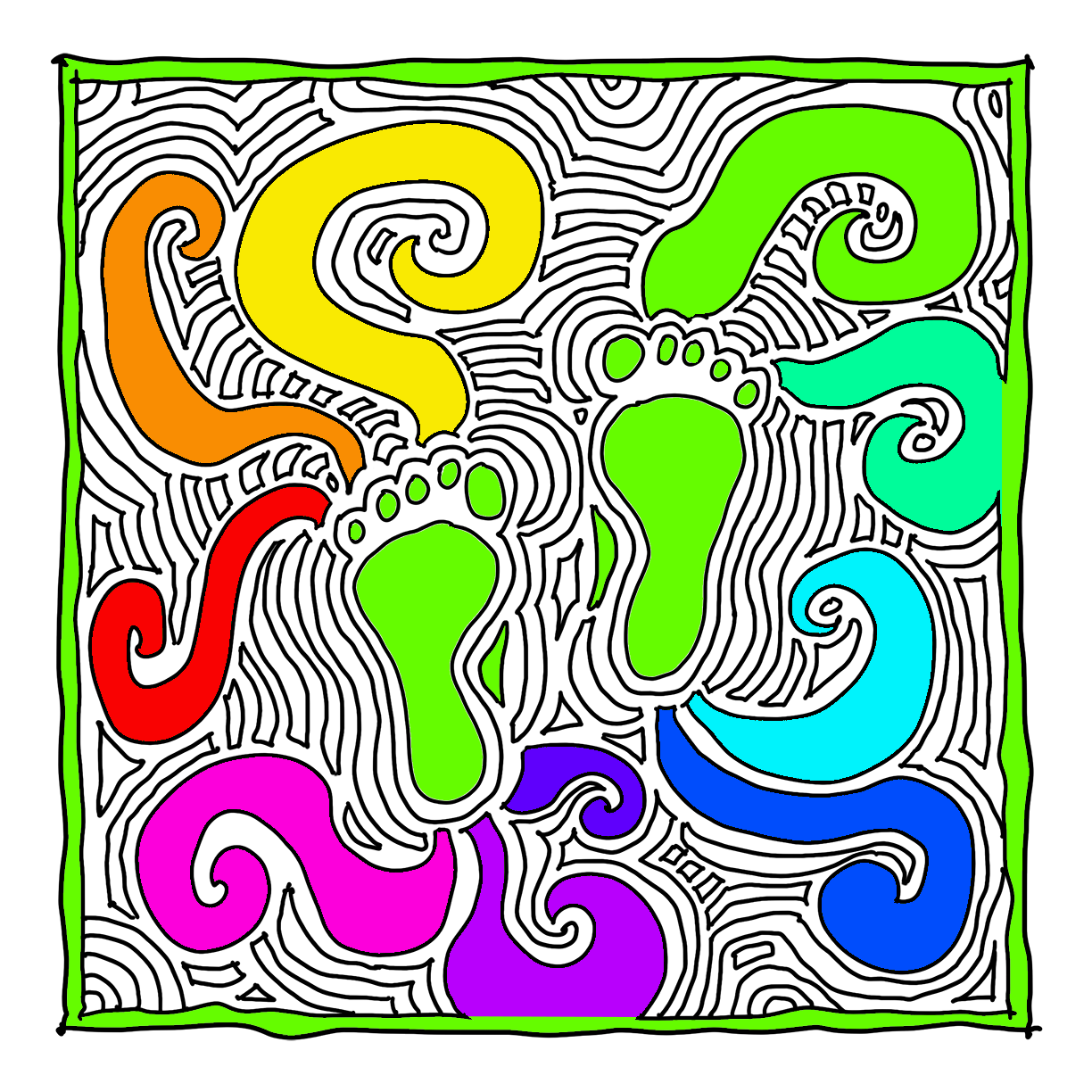
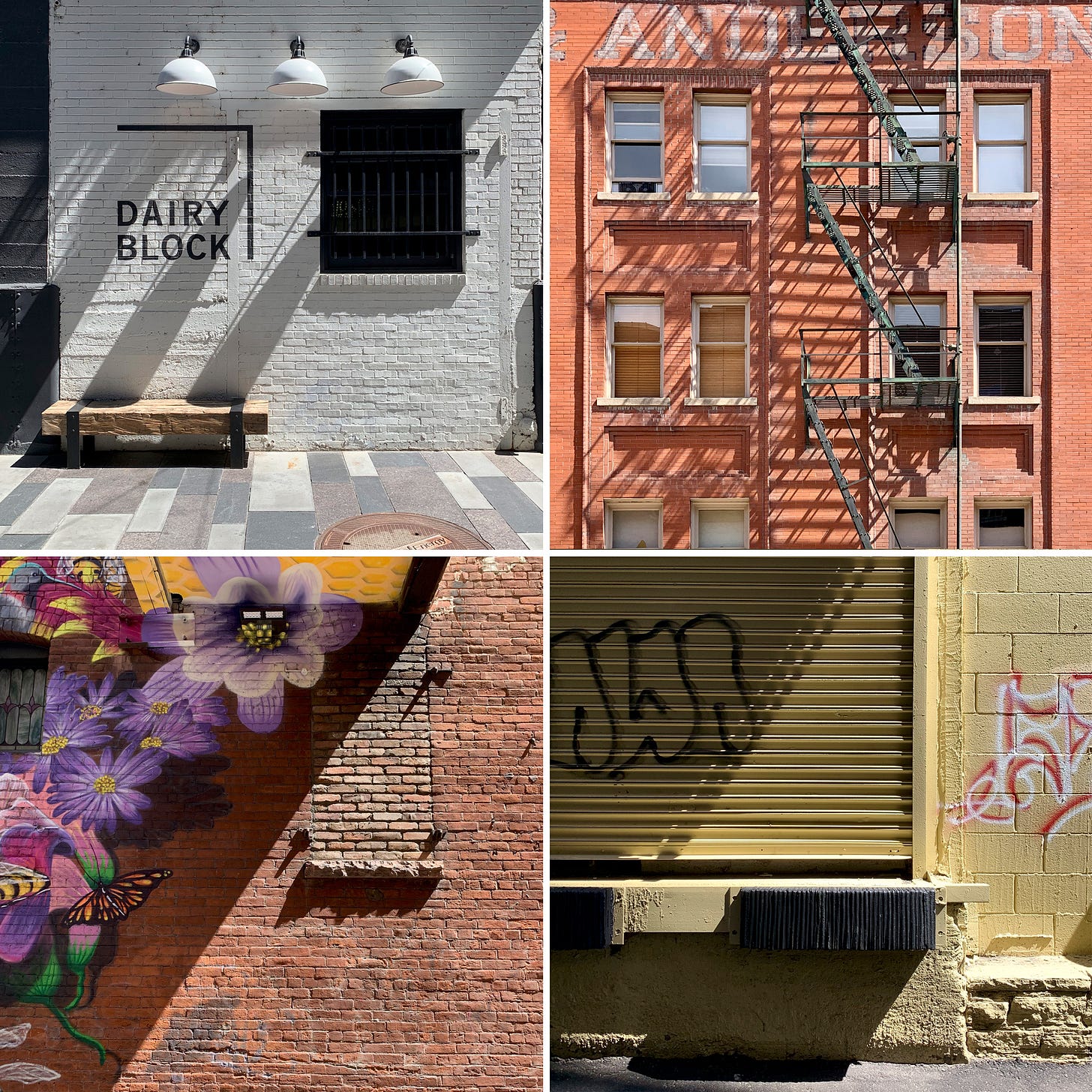
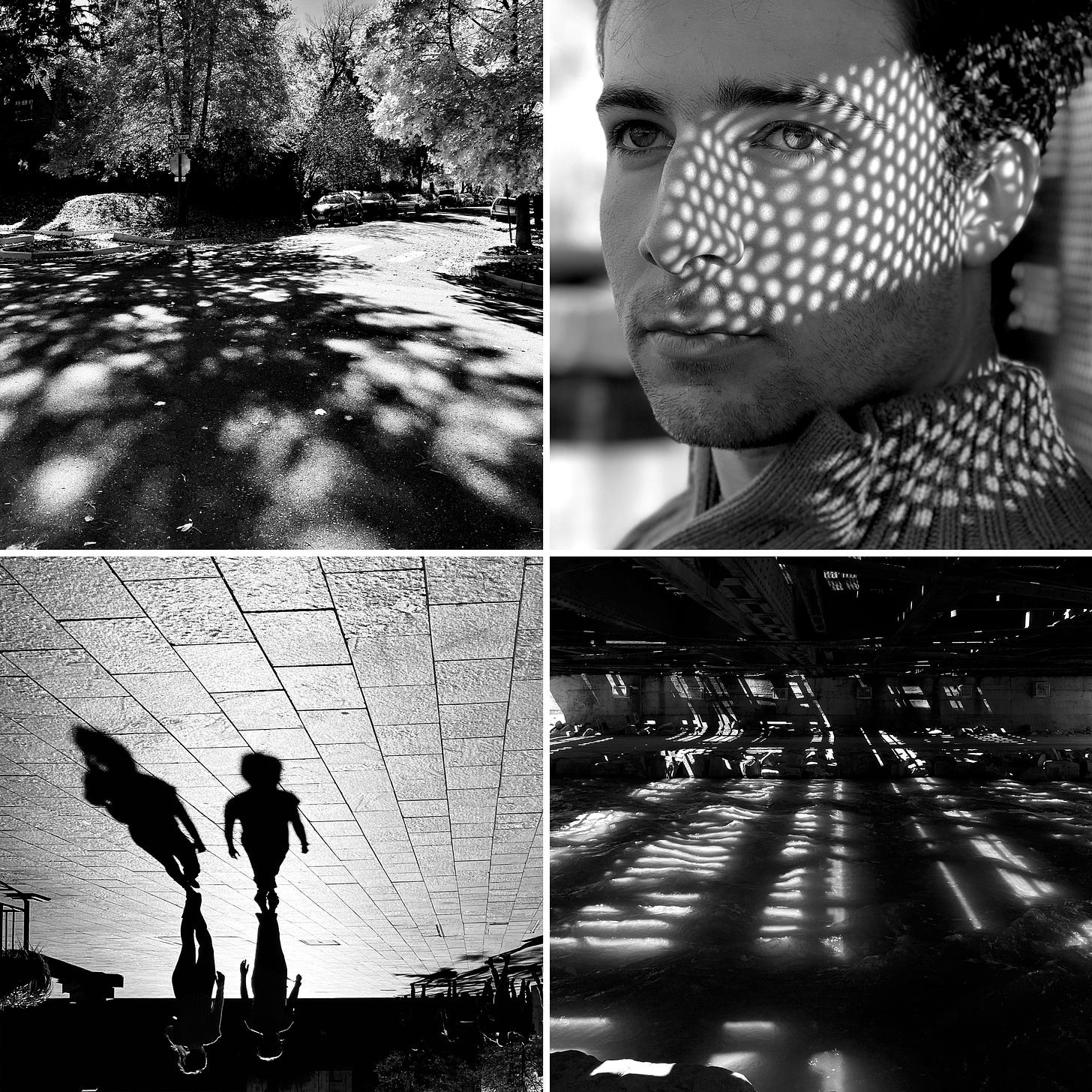
If that was you with an iPod touch, holy sh!t. You are a talent, Jennifer. xo
When he was still a student at CalTech, Paul Steinhardt (now the Albert Einstein Professor of Science at Princeton!) once asked his professor Richard Feynman (Nobel Prize in Physics) what was the color of a shadow? He was afraid that Feynman would think it was a dumb question, but instead he launched into a lovely discussion on the subject. I think that I can find it, and I will send it to you!